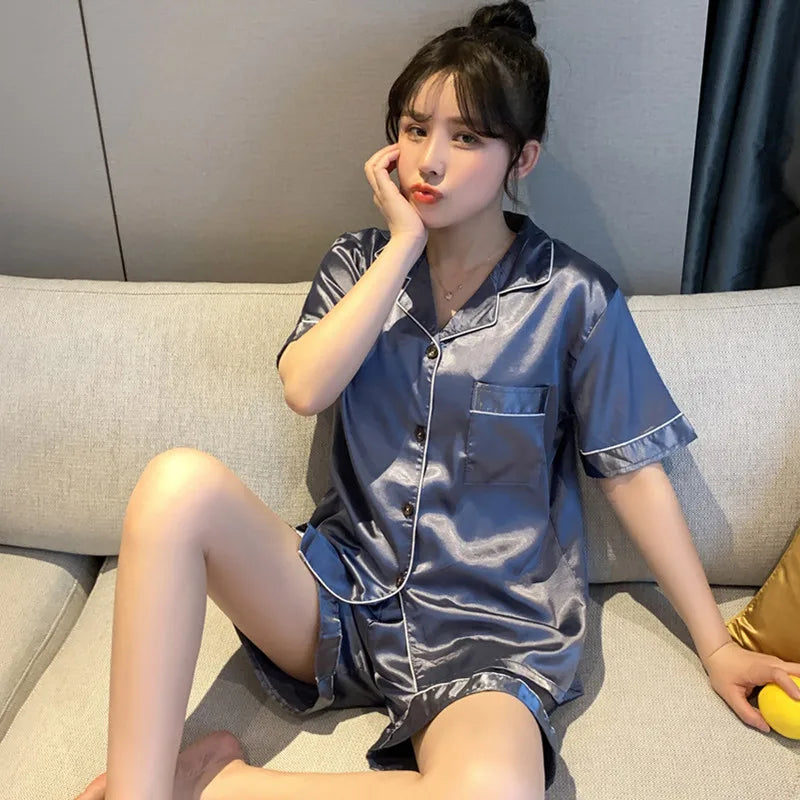Do Newborns Need Pajamas? The Essential Guide to Baby Sleepwear
Table of Contents
- Introduction
- The Importance of Sleepwear for Newborns
- Types of Sleepwear for Newborns
- Choosing the Right Fabric
- The Importance of Fit
- Creating a Bedtime Routine
- Conclusion
- FAQ
Introduction
When it comes to welcoming a newborn into our lives, the excitement is often accompanied by a whirlwind of questions. One common query that surfaces among new parents is, do newborns need pajamas? The answer to this question is not just a simple yes or no; it delves into the nuances of comfort, safety, and the importance of quality sleep for our little ones.
Newborns sleep for most of the day, often in short bursts, and their sleep patterns can be erratic. Understanding the right clothing to keep them comfortable and safe while they sleep is crucial. According to recent studies, sleep attire plays a significant role in a baby’s sleep quality, affecting their temperature regulation and overall comfort. As parents, we want to ensure our newborns are cozy without the risk of overheating or discomfort.
In this blog post, we will explore the importance of pajamas for newborns, the best types of sleepwear, and how to choose the right fabric and fit for your baby. Together, we’ll uncover the essentials of dressing our little ones for sleep and how to create a safe and comforting bedtime routine. By the end of this post, you will have a deeper understanding of whether newborns need pajamas, what materials are best, and how to ensure your baby sleeps soundly.
Let’s embark on this journey into the world of baby sleepwear, where comfort meets safety and style.
The Importance of Sleepwear for Newborns
Understanding Newborn Sleep Patterns
Newborns have unique sleep patterns that differ significantly from older infants and toddlers. During the first few months of life, they typically sleep between 14 to 17 hours a day, often waking every few hours for feedings and diaper changes. This erratic sleep schedule is largely due to their developing circadian rhythms and the need for regular nourishment. Understanding these patterns allows us to appreciate the importance of their sleep environment, including the role that pajamas play.
The Role of Sleepwear in Comfort and Safety
Pajamas are not merely cute clothing items; they serve essential functions that contribute to a baby's overall sleep experience. Proper sleepwear can:
- Regulate Body Temperature: Newborns are unable to regulate their body temperature effectively. Pajamas made from breathable materials help maintain an optimal temperature, preventing overheating or chilling.
- Promote Safety: Snug-fitting pajamas help reduce the risks of suffocation and minimize the likelihood of loose fabric covering the baby’s face while sleeping.
- Enhance Sleep Quality: Comfortable, well-fitted sleepwear allows babies to move freely, reducing sleep disturbances and promoting longer, more restful sleep.
Safety Guidelines for Baby Sleepwear
Safety is paramount when it comes to dressing newborns for sleep. The American Academy of Pediatrics (AAP) provides guidelines that parents should follow:
- Dress your baby in a single layer of clothing that is appropriate for the room temperature, keeping in mind that they should not be overdressed.
- Avoid using blankets, pillows, or stuffed toys in the crib to reduce the risk of suffocation.
- Opt for sleepwear that is snug-fitting and free of any loose strings or embellishments that could pose a choking hazard.
Types of Sleepwear for Newborns
As we consider the question of whether newborns need pajamas, it’s essential to explore the various types of sleepwear available and their suitability for newborns.
Footed Pajamas
Footed pajamas, often referred to as “footies,” are a popular choice for newborns. They provide full coverage, keeping little toes warm and cozy. Here are some benefits of footed pajamas:
- Temperature Regulation: Made from breathable fabrics, they help maintain a comfortable temperature, ensuring that the baby doesn’t get too cold or too hot.
- Convenience: They often feature zippers or snaps for easy diaper changes, making nighttime routines smoother for parents.
Sleep Sacks
Sleep sacks are another excellent option for newborns. These wearable blankets provide warmth without the risks associated with loose blankets. Benefits include:
- Safe Sleep Environment: Sleep sacks keep the baby warm while promoting safe sleep practices, as they eliminate the need for traditional blankets.
- Variety of Fabrics: Available in various materials, sleep sacks can be chosen based on the season, ensuring comfort year-round.
Onesies and Gowns
Onesies and gowns are versatile options for newborn sleepwear. They are easy to put on and take off, making diaper changes convenient. Here’s why they are beneficial:
- Ease of Use: Gowns allow for quick access during nighttime changes, while onesies stay snugly fitted to the baby’s body.
- Layering Potential: These can be layered under sleep sacks or footed pajamas for added warmth during colder months.
Choosing the Right Fabric
The fabric of baby sleepwear is crucial for comfort and safety. Here are some key considerations when selecting sleepwear materials for your newborn:
Breathable Fabrics
Opt for sleepwear made from breathable fabrics such as cotton or bamboo. These materials allow for proper air circulation, helping to regulate the baby’s body temperature. For example, Pima cotton is a popular choice due to its softness and hypoallergenic properties.
Natural vs. Synthetic Materials
While synthetic fabrics may be cheaper, they often lack the breathability and comfort of natural materials. Natural fabrics like cotton and bamboo are less likely to irritate sensitive skin and are often more comfortable for prolonged wear.
Hypoallergenic Options
Some babies may have sensitivities to certain fabrics or chemicals in textiles. Choosing hypoallergenic sleepwear can minimize the risk of skin irritation and promote a more comfortable sleeping environment.
The Importance of Fit
The fit of sleepwear is just as critical as the fabric. Here are some tips to ensure the right fit for your newborn’s pajamas:
Snug but Not Tight
Sleepwear should fit snugly against the body without being restrictive. This helps prevent the fabric from riding up over the face while allowing the baby to move comfortably.
Avoid Loose Clothing
Loose clothing can pose a safety hazard, increasing the risk of suffocation or entanglement. Always choose sleepwear that adheres to safe sleep guidelines, ensuring it is fitted appropriately.
Size Considerations
When choosing pajamas, consider the baby's weight and length. Most brands provide size charts to help parents select the correct fit based on their newborn's measurements.
Creating a Bedtime Routine
Establishing a calming bedtime routine can greatly enhance the sleep experience for newborns. Here are some tips for creating an effective routine:
Consistent Sleep Schedule
Newborns thrive on consistency. Establishing a regular bedtime routine helps signal to your baby that it’s time to wind down. This can include:
- A warm bath
- Gentle massage
- A bedtime story or lullaby
Creating a Calm Environment
A soothing environment can facilitate better sleep. Ensure the baby's sleeping area is dark, quiet, and at a comfortable temperature. Using a sound machine or soft nightlight can help create a peaceful atmosphere.
Monitoring Temperature
Regularly check the room temperature and dress your baby accordingly. The AAP recommends keeping the room temperature between 68°F and 72°F (20°C to 22°C) for optimal sleep.
Conclusion
In summary, the question of whether newborns need pajamas is answered with a resounding yes. Quality sleepwear plays a vital role in ensuring our little ones are comfortable, safe, and ready for a restful night’s sleep. By choosing the right fabrics, opting for safe and snug-fitting designs, and establishing a calming bedtime routine, we can help our newborns thrive during their crucial early months.
As we embrace this journey of parenthood together, let us remember that every small choice we make regarding our baby's sleepwear can have a significant impact on their overall well-being. By prioritizing comfort and safety, we not only support our newborns’ sleep quality but also our own peace of mind as parents.
FAQ
How should I dress my newborn for sleep?
Dress your newborn in a single layer of clothing appropriate for the room temperature. Footed pajamas or a sleep sack made from breathable materials are excellent choices.
Can newborns wear hats to sleep?
The AAP recommends against using hats for sleep after the first few hours of life. It's crucial to avoid covering the baby's head and face while they sleep.
What materials are best for baby sleepwear?
Opt for natural, breathable fabrics such as cotton or bamboo. These materials help regulate temperature and reduce the risk of skin irritation.
How can I tell if my baby is too hot or too cold?
Check your baby's core temperature (chest, neck, back, and tummy) rather than their hands or feet. If their core feels clammy or sweaty, they may be too hot. Conversely, if their core feels cool, they may need an additional layer.
When should I transition my baby out of swaddling?
You should stop swaddling your baby when they show signs of trying to roll over, typically around 3 to 4 months old. At this point, consider using a sleep sack instead.
By understanding the importance of sleepwear and following these guidelines, we can provide our newborns with a safe and comfortable sleep environment, setting the foundation for healthy sleep habits as they grow.



